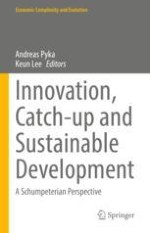2021 | OriginalPaper | Chapter
The Value of Industry Studies: Impact of Luigi Orsenigo’s Legacy on the Field of Innovation and Industry Evolution
Authors : Junguo Shi, Bert M. Sadowski
Published in: Innovation, Catch-up and Sustainable Development
Publisher: Springer International Publishing
Activate our intelligent search to find suitable subject content or patents.
Select sections of text to find matching patents with Artificial Intelligence. powered by
Select sections of text to find additional relevant content using AI-assisted search. powered by
